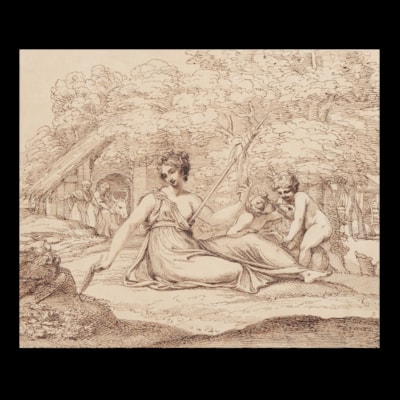THOMAS FORSTER
(active c.1690-1713)Plumbago portrait of a Lady, wearing open gown over a chemise
1706
11 cm (4 ³/₈ inches)
Plumbago on vellum
Turned wood frame
Signed and dated lower right 'TForster / Delin / 1706'
£5,500
This type of portrait, graphite on vellum, is known as a ‘plumbago’. These portraits, which evolved from the original drawings made on paper by printmakers, had a relatively short fashion in England from the late 17thcentury through to the early 18thcentury. Although Forster was not an engraver, he used his skill as an artist to show how texture could be brilliantly described using simple graphite. Although the term ‘plumbago’ clearly refers to lead (as in ‘plumbline’ or ‘plumber’) these small drawings were usually executed in soft graphite.
Thomas Forster can be defined as one of the greatest exponents of this fashionable portraiture – his skill in rendering silk gowns next to a cotton chemise can clearly be seen here. His patrons included many intellectuals and gentlemen connoisseurs but clearly also had appeal to fashionable women who did not mind sacrificing showing the bright colours of their gowns to Forster’s skilful pencil work.
Few details of Forster’s life are known but his work dates from circa 1690 and he may have been born around 1677 as suggested by Vertue. As with most plumbago artists, he seems to have worked ad vivum but many of his portraits were later engraved (see, for example, his portraits of John Savage and John Newt engraved by Michael Vandergucht after Forster in the collection of the National Portrait Gallery, London).
European Private Collection

shipping notice
Worldwide shipping is included in all prices.
The Limner Company does not accept any responsibility for import duty, this is to be paid by the buyer.
Some stock items contain materials from endangered species which are governed by CITES regulations and will require a permit to export outside of Great Britain. If a certificate of export is required then this will be the responsibility of and paid for by the buyer .
you may also like



 +44(0)7983510056
+44(0)7983510056











